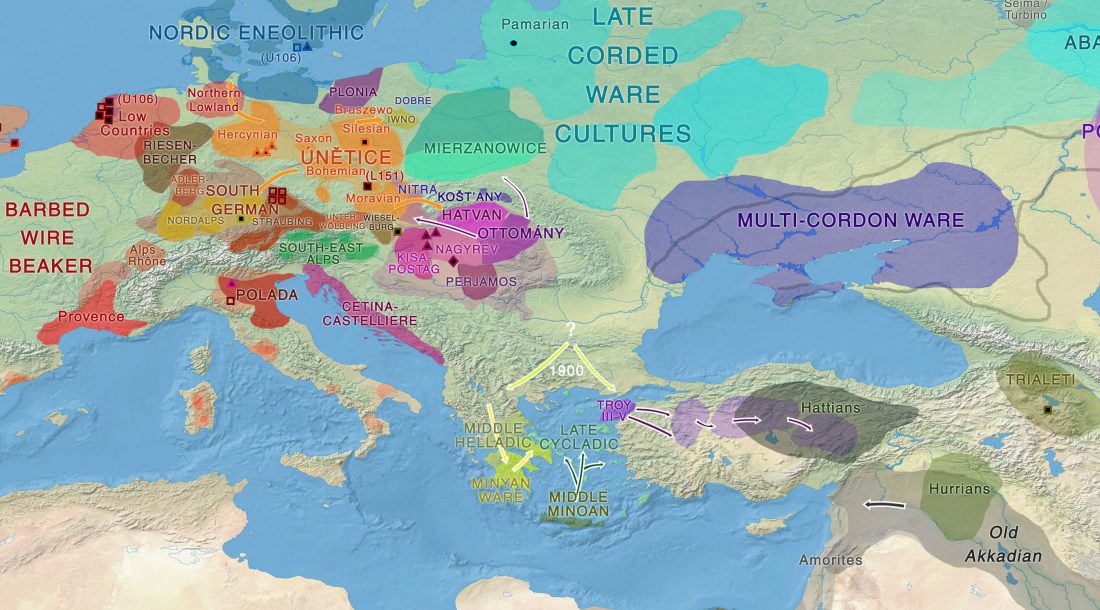There seems to be a growing trend to over-simplistic assumptions in archaeology and linguistics, led by amateur and professional geneticists alike, due to the recent (only partially deserved) popularity of Human Evolutionary Biology.
These studies are offering ancient DNA samples, whose Y-DNA and mtDNA haplogroups and admixture analyses are showing some new valuable information on ancient cultures and peoples. However, their authors are constantly giving uninformed conclusions.
I have read a good, simple description of the Kossinnian model in the book Balkan Dialogues (Routledge, 2017), which has been shared to be fully read online by co-editor Maria Ivanova.… Read the rest “The over-simplistic “Kossinnian Model”: homogeneous peoples speaking a common language within clearly delimited cultures”
